Getting your snowboard setup dialed is akin to fine-tuning a car, but much easier. Still, you want things to be just right when you mount bindings on your board, from choosing binding angles to stance width and forward lean.
Tools for Mounting Snowboard Bindings
Now that you’ve bought your bindings, here’s a basic list of what you’ll need to mount your bindings to your board. Here’s a basic list of what you’ll need to mount your bindings to your board. It’s pretty basic, but find these first before you start.
- Number 3 Phillips screwdriver for mounting the bindings
- Adjustable wrench to fit bindings to snowboard boots
- Better yet, a Burton Zip Tool to mount bindings and adjust boots (and it will fit in your pocket for on the fly adjusting!)
Find Your Natural Stance
Find Your Stance Width
Finding a comfortable stance width comes next. The width is the distance between the two bindings. Stance width depends mostly on your height and should roughly be about 1 inch/2.5 cm wider than your shoulders. As long as you make sure you choose the right snowboard size for your height, then the reference stance width will be just right. A wider stance gives more stability at higher speeds. A narrower stance makes for easier rotations but has a little less stability.
To measure, use the distance from the middle of one baseplate to the other, or use the reference stance that is typically marked on the top sheet as a guide. Most boards have a ‘reference stance,’ which is the manufacturer’s suggested stance for the size, width and flex of that particular board. It’s not set in stone, but it’s a great place to start if you have no idea what stance you prefer. Additionally, here are two stances to consider…
- Snowboard Stance Centered – Excellent for riding switch, this stance allows a board to turn easily and gives a rider a feeling of good control. Freestyle and park riders like the balanced feeling it provides.
- Snowboard Stance Setback – For riders who enjoy the directional control they get from being closer to the back of the board, a slightly set back from the center stance is optimum. The nose will float in powder making for easier turns. A setback stance is not ideal for park riding.
Set Your Angle on the Bindings
Once you’ve determined your stance width, set your angles on the bindings. A pretty common setup is +18 on your front foot, and -6 on your back foot. That said, freestyle riders may go +15/-15 or even more duck-footed. On the other extreme, freeriders may go +18 up front and 0 or +3 on their back foot. It comes down to what feels comfortable, and your style of riding.
- Forward Stance – The toes are pointing forward on both feet. Nearly everyone positions their front toes forward.
- Duck Stance – Immensely popular these days, duck stance is where the front binding angle is positive and the back binding angle is negative. Thus each foot faces a different direction – sort of like duck feet. Useful for park and freestyle riding, duck stance gives you more stability as your body is aligned with the snowboard. The front angle is anywhere between 30° and 0° degrees while the rear angle is negative, between -1° and -20°. Keep the angles apart by at least 8-10 degrees.
- Alpine Stance – Used for race and carve snowboards, alpine stance is very aggressive angles with both toes facing down the hill. Large angles combined with hard boots allow one to carve aggressively.
Snowboard Binding Hole Patterns
Most snowboards use the same four-hole mountain pattern, with the exception of Burton which uses a Channel System. The inserts are where the screws mount to the board.
Here are four the different insert patterns on various snowboards. Learn more about snowboard mounting patterns and options.
- 4 x 4 – Holes are exactly spaced 4 cm apart vertically (tip to tail) and horizontally (edge to edge).
- 2 x 4 – Holes are spaced 2 cm apart vertically (tip to tail) and 4 cm horizontally (edge to edge).
- 3D – A Burton patent diamond hole pattern.
- Channel – Burton specific mounting system where a grooved channel is used in the board instead of inserts. The channel works best with Burton EST bindings. EST, or extra sensory technology, allows for maximum board feel and control. EST bindings allow the board to flex naturally beneath your feet the way it was designed to do. The channel also offers infinite stance options since there aren’t any limiting inserts. There is, however, a separate kit that modifies Burton’s 3D bindings to work with the Channel system.
Mount Your Bindings
Once you know your stance and your binding baseplates are set to the appropriate angles, center the bindings over the board and align the holes in the plates with the inserts in the board. Drop 4 screws through each baseplate and loosely tighten. Re-measure your stance width just to be sure, and then use a screwdriver to tighten down the screws. Get them tight, and check them again after a day of riding to be sure the screws aren’t loosening up–it happens.
Now to adjust your binding highbacks to the board. You want the highback to be as aligned with your heelside edge as possible, so loosen the necessary screws on the binding chassis and slightly twist the highback to align. Keep the highback in its new position while re-tightening the screws.
Last but not least… Looking at the back of the highback, there should be a forward lean adjustment. Forward lean literally pushes your calves forward, forcing you to bend at the knee and get lower. Some people like Zero forward lean, others kick it up a notch or two. Again, it comes down to personal preference and riding style.
Okay, now get out there and test your setup. Don’t be afraid to tweak your stance width, bindings angles and forward lean throughout the day until it’s picture perfect.
Looking for a pair of women’s snowboard bindings? Look no further!
This article was updated on February 13, 2018, and originally published May 20, 2011.



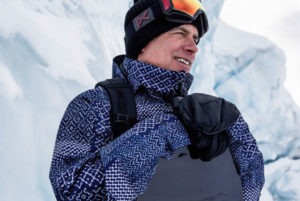

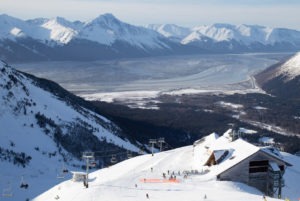
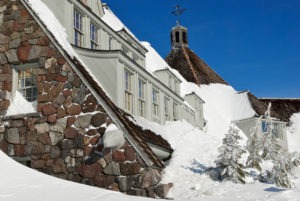
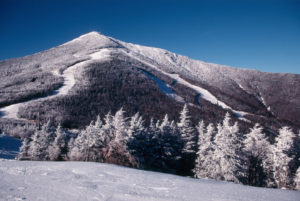
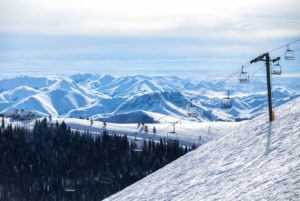
I think “whole” should actually be “hole”
I have a Burton chopper 131 snowboard and was wondering if I can use the M4 Bandit binding for the board? I am hoping that I can simply buy a retro 3×3 disk and mount the binding. The worst case is drilling a hole in the 4-hole disk that came with the binding. I just purchased the M4 binding from The-House.
Thanks.
I have a burton blunt and I just got the Flow Flight 1 bindings and I was wondering if they will work or will I have to buy a new disk to match it.
Thank You.